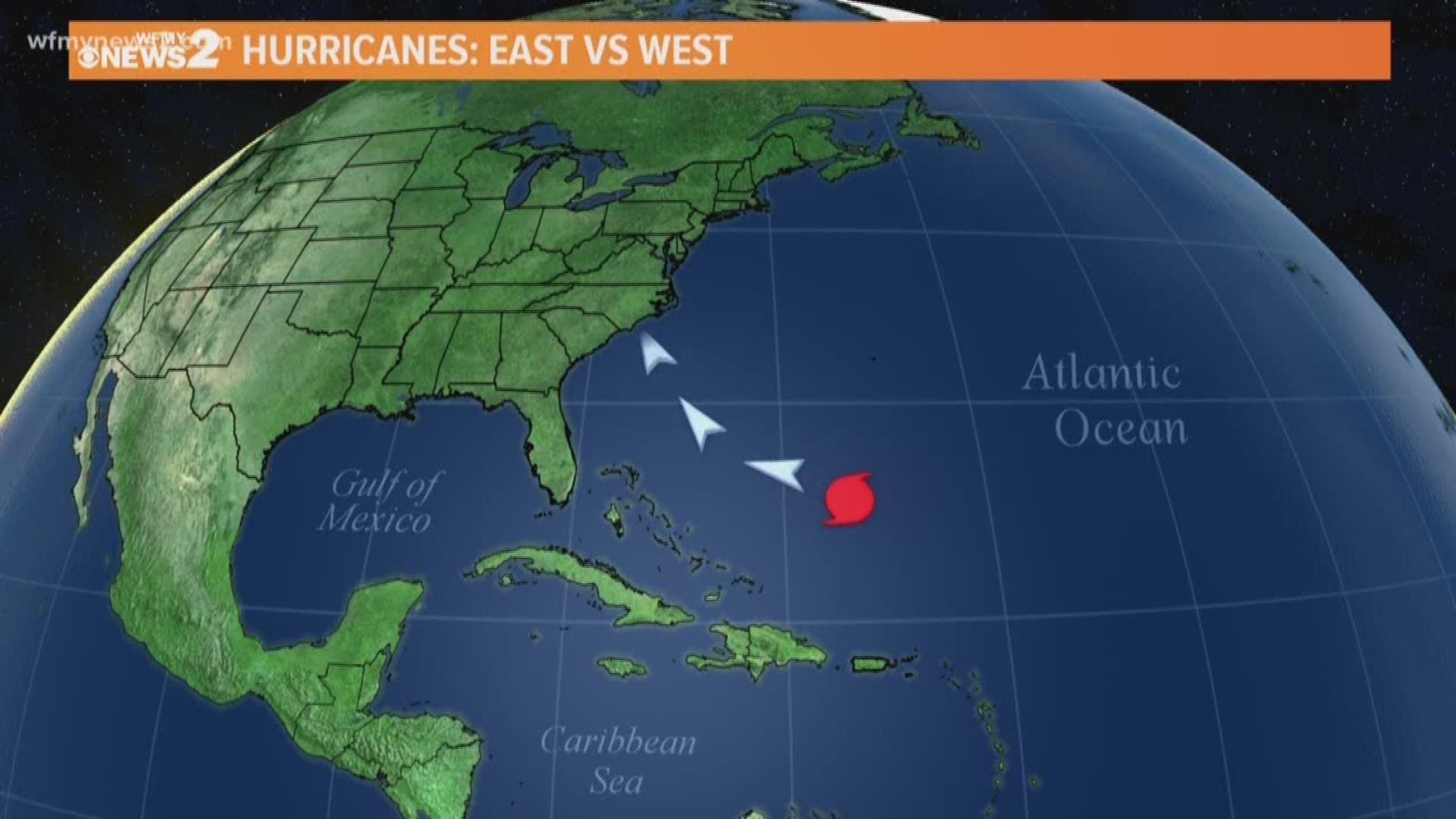VERIFY QUESTION
Hurricane season already is shaping up to be an active one in Atlantic waters. With Tropical Storm Gordon hammering the Gulf, we use this weather Wednesday in VERIFY to tackle a frequently-asked question: why do hurricanes tend to hit the east coast more often than the west coast?
VERIFY SOURCE
- WFMY News 2 meteorologist Eric Chilton
VERIFY PROCESS
Two factors explain why hurricanes very rarely form and come close to land on the west coast -- rotational direction and water temperature.
"In our hemisphere, we have that coriolis effect, which causes things to spin in a certain direction (counter clockwise)," Chilton said.
Hurricanes in the northern hemisphere move west to northwest, meaning on the east coast, hurricanes spin west-northwest toward land. In the west coast, they spin west-northwest away from land and out to sea.
Secondly, hurricanes need warm water to form. Water temperatures in the Atlantic Ocean average about 80 degrees because of the warm air from the Gulf Stream. In the Pacific Ocean, they average about 60 degrees, though slightly warmer water near Hawaii would explain why that state sees the occasional hurricane.
There is no documented case of a hurricane hitting California, though Tropical Storms have dumped rain and winds.
VERIFY CONCLUSION
Any hurricane that would form in the Pacific likely would spin away from land. Usually, it is too cold in the Pacific for hurricanes to form in the first place.

